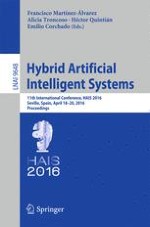2016 | OriginalPaper | Buchkapitel
A Soft Computing Approach to Optimize the Clarification Process in Wastewater Treatment
verfasst von : Marina Corral Bobadilla, Roberto Fernandez Martinez, Ruben Lostado Lorza, Fatima Somovilla Gomez, Eliseo P. Vergara Gonzalez
Erschienen in: Hybrid Artificial Intelligent Systems
Aktivieren Sie unsere intelligente Suche, um passende Fachinhalte oder Patente zu finden.
Wählen Sie Textabschnitte aus um mit Künstlicher Intelligenz passenden Patente zu finden. powered by
Markieren Sie Textabschnitte, um KI-gestützt weitere passende Inhalte zu finden. powered by
